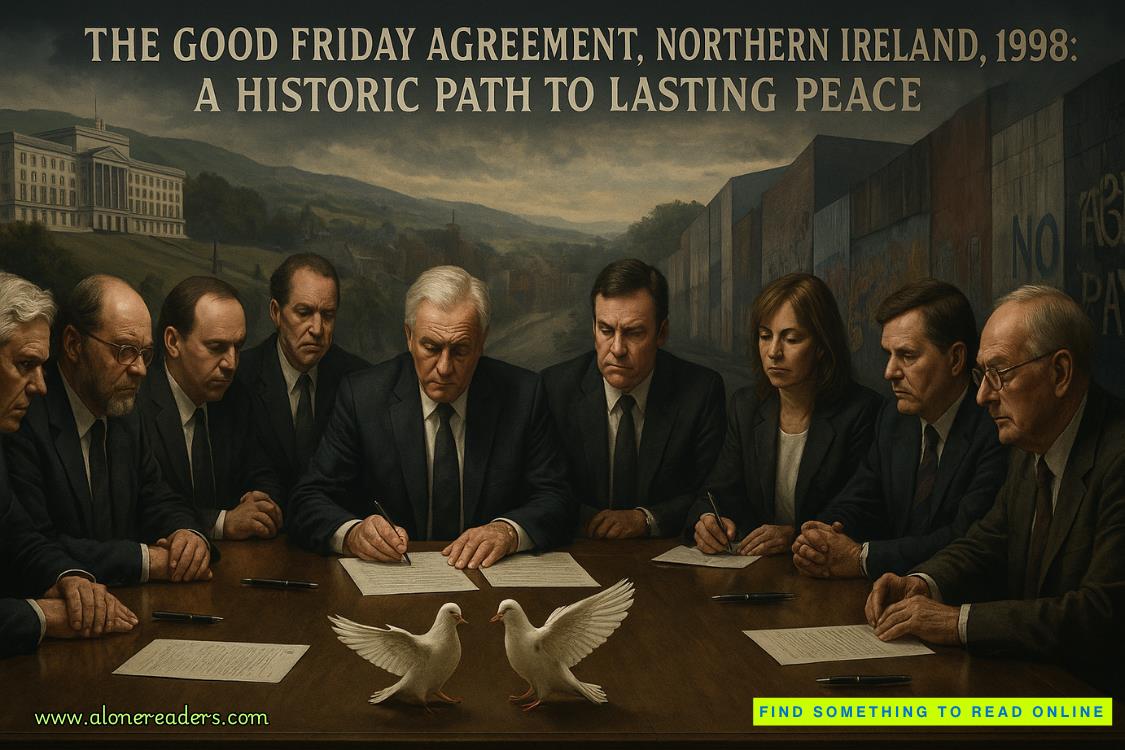Page 9 of Absent Humanity
Amber shrugged. It was proving…strange.
The two of them had managed toborrow an office at the Keystone PD. It was a bustling central building, whichlooked as though it had been there forever. The office was off in a corner ofthe third floor, with large windows that mostly provided a view of theapartment building across the street. Amber briefly wondered what the residentsthought about having the police as their neighbors.
“I’m not sure what to make of it,” Ambersaid. “We seem to have a collection of astrological symbols, but they’re beingused as a part of a code, so I’m not sure if the original meaning is relevantor not. Have you made any progress with the files?”
“Some.” Simon had two thick paperfiles on the desk in front of him. It seemed that the Keystone PD liked to dothings the old-fashioned way, and while Amber was sure that there were digitalversions, it seemed that Simon did too. Somehow, she seemed to still belearning small things like that about her partner even now.
“Tell me about Katrina van Nuit,”Amber said.
“She was a kindergarten teacher. Twenty-fiveyears old at the time of her death. Volunteered with a couple of localcharities in her spare time. The witness statements from the time are filledwith people saying that they couldn’t believe anyone would want to kill her.”
Amber nodded, knowing that, to acertain extent, that was what people always said when someone had been killed.A death came out of nowhere, and people couldn’t imagine how it could happen. Yet,in this case, it sounded as if it were true.
“So there’s no sign of anything inher background that might provide a reason why someone might want to kill her?”Amber asked.
Simon shook his head. “Nothing.There’s no sign of involvement in any criminal activity, no one mentioned anyobvious enemies, she didn’t hang out in dangerous places. No red flags at allthat might point us at someone specific.”
Which was a little frustrating.
“Honestly,” Simon said. “I’m notsure if we’re going to get anything from looking at her, not when the local PDcouldn’t find anything two years ago.”
Amber sighed. “I know, but we haveto try. If this is an initial kill by the same killer, then there’s a chancethat it’s more personal to him, and that he made more mistakes.”
“The idea that a serial killer’sfirst murder means something to them?” Simon said.
Amber nodded. It might help toexplain why there had been a gap between the two murders, if a killer hadtargeted Katrina for personal reasons and then, over time, had come to realizethat they liked killing so much that they couldn’t stop themselves from doingit again. If so, the first kill wouldn’t have been made with all the skill bornof planning and experience. It was more likely that the killer would have beensloppy there.
“I’ll keep going,” Simon said.
“Also try to look for anyconnection between the two victims,” Amber suggested.
Simon nodded. “There has to be areason why he targeted these two women rather than anyone else. I’ll check whatI can find of their social media to see if there’s any sign that they knew oneanother. In the meantime, though, you need to focus on making progress with thecode the killer left us.”
Amber could only agree with that. Ifthe killer had left something like this behind, then it was obvious that hewanted to communicate with the authorities, even if it was just to taunt them.That suggested that this code shouldn’t be too hard to crack. Yet there were somany different symbols with it, all seemingly relating to astrology, and thatdidn’t quite fit any code or cipher Amber knew about. That suggested that thekiller hadn’t simply copied his code from a book.
Amber started to run throughpossibilities in her head, her brain flicking over into that quiet space whereshe shut out the outside world in order to be able to concentrate. It was whatshe did when she was at her best with a puzzle, her mind cycling throughpossibilities, trying to find connections to the vast store of information thatAmber’s memory held onto almost without her trying.
Presumably, it was a cipher ratherthan a code, since this was something left for the police and the wider world,not sent to one recipient with the correct key. It wasn't a straightforwardone-to-one cipher, though, because once Amber started to plug in the mostcommon letters with the most frequent symbols, she got gibberish rather thanmeaningful word shapes. The wheel at the bottom of the page was confusing. Wasit meant to be a key to the rest of the cipher? It didn’t appear to be, nomatter how Amber tried to use it.
Even after that thought, shecouldn’t find an answer. Worse, her mind had that stuck feeling it got when sheknew that she wasn’t making progress, and that no amount of trying toconcentrate on the problem would give her the answer she needed. It didn’thappen often with puzzles, but Amber knew better than to try to force the issuewhen it did happen. She needed time to process, the way she sometimes neededwhen faced with a particularly difficult chess position in a correspondencegame, and the best thing to do was to find something else to concentrate on.
Thankfully, that thought gave Ambersomething else she could focus on, because it dragged her thoughts from thiscase back to Sinead’s death. Amber still felt a hint of guilt at what hadhappened to her, because if Amber had never mentioned Sinead in her diary, thekiller presumably wouldn’t have targeted her. She was also intrigued by thenote the killer had left for her.
Solve me.
Did he mean that there wassomething about the card that would provide a clue? That it was a puzzle in andof itself? That had been Amber’s first reaction, but the more she thought aboutit, the more the location of the card seemed significant.
It had been left on a chess board,where a game had been in play. Amber could remember the position. She evensketched it out on a piece of paper, staring at it. The more she looked at it,the more something seemed unusual about it. As if it wasn’t quite the kind ofposition that would have arisen from normal play.
A chess study; the killer had lether a chess study to solve. Amber stared at it, trying to find plausiblecandidate moves, trying to understand the geometry of the position. Because itwas a study, it was likely that every piece was there for a reason. Yet, forseveral minutes, she didn’t see it.
Finally, Amber realized that aninnocuous pawn move that left a piece hanging took away a crucial defensivesquare, allowing a forced checkmate sequence. Amber wrote the whole sequenceout, ten moves of notation. Okay, she’d solved the puzzle. Now what? It didn’ttell her anything about the killer, didn’t give her anything. Unless…
Amber went over to her laptop,calling up a web browser. Into it, she typed the long string of algebraicnotation she’d just gotten from the puzzle. It was a long shot, but Amberdidn’t feel as though this killer did anything without a reason, and he knewenough about Amber to know that she would relish a problem like that one. Shehit the return key, and, instead of the error message Amber was expecting, awebpage popped up.
On it, there was a simple message.
A good chess player knows to guardwhat matters. This time, I’m coming for what’s most precious to you.















